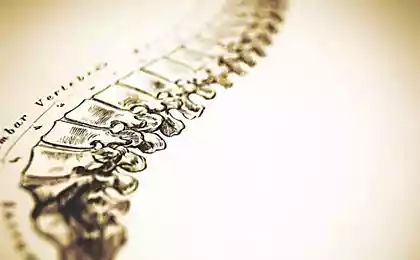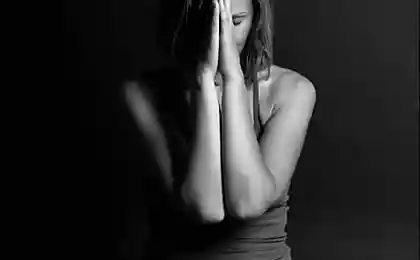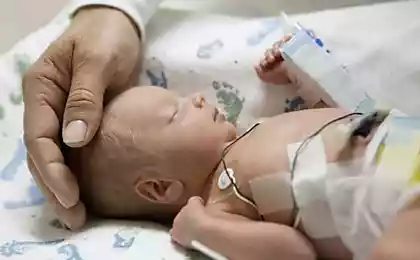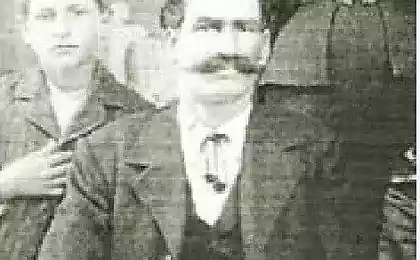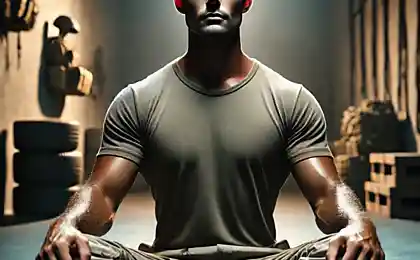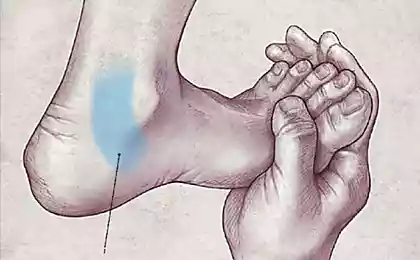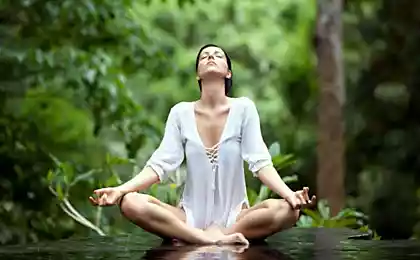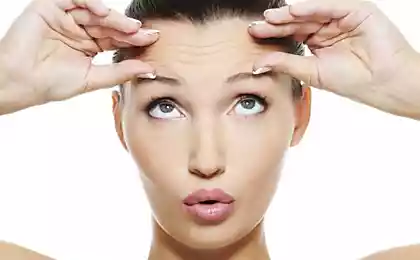489
Primary breath: basic mechanism of life
The heart beats in accordance only with its inherent rhythm, which allows blood to circulate and deliver oxygen and key nutrients to every cell of the body. Further, the blood carrying the carbon dioxide is returned in accordance with the rhythm to the heart and is pumped to the lungs where it is removed carbon dioxide is reoxygenate. This rich oxygenated blood returns to the heart, ready for the next "round".
The lungs expand and contract in accordance with their inherent rhythm, 4 times less than the frequency of heartbeats. Cracking down, they fill with air, rich with oxygen and this oxygen is carried in the blood. Taking in exchange for it carbon dioxide from the blood to the lungs are reduced and squeeze out the air from itself into the atmosphere, creating the necessary space for the next breath and oxygenation.
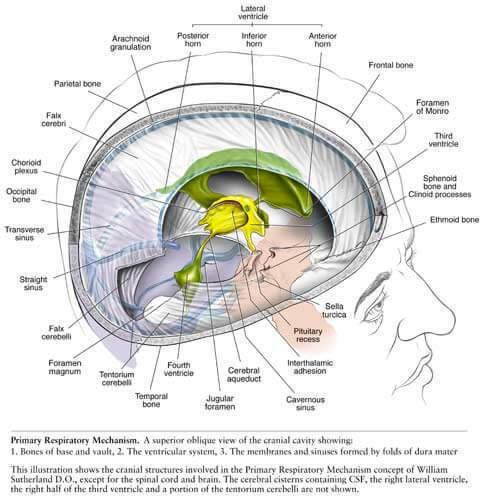
Both of these characteristic rhythm is extremely sensitive to changes in the external environment or physiological needs inside it. For example, if you climb to a higher altitude where the air is thinner and the oxygen concentration is lower, your breathing will increase to get enough oxygen, and heart starts to beat faster to provide adequate supply of necessary tissues of oxygen.
If the height and external environment remain the same, but you create increased need for oxygen, such as is the case with modern dance, your heart will begin to beat faster and respiration increases in response to these domestic needs.
On the other hand, the primary breath is the rhythm of the brain and Central nervous system, which remains unchanged. This movement is transmitted through the fluid (cerebrospinal fluid) and sheath (dural membrane) bones forming the skull and facial skeleton.
It is the rhythmic movement of the skull bones were registered in humans and monkeys. I palpated his dogs and ducks, hummingbirds and even at a great cormorant that I found injured on the beach. The rhythm of this movement is slower than the heart rate or breathing, any healthy person it remains the same regardless of whether he sleeps or runs a marathon.
The physiological function is breathing. because it is related to the gas and electrolyte exchange at the cellular level, known as cellular respiration. It is called primary because it underlies and controls all other physiological mechanisms of the body. It is called a mechanism because it manifests itself through a complex articulation of the skull bones.
If the skull is injured, that is to a greater or lesser extent will affect the efficiency of the mechanism of primary respiration. Childbirth is a traumatic act that is undergoing the vast majority of births in the Western world.
Problems in neonatal and children's age, such as vomiting in infants, learning difficulties in school, malocclusion of teeth — these are just a few of the least serious consequences of such injuries. More severe birth injury leads to cerebral palsy and mental retardation.
Injuries during sports, including football and Boxing as the most dangerous sports, can have profound and lasting consequences, if not timely recognize its seriousness. The car is probably is the most traumatic means available to humanity.
With a sharp sudden changes in body position that occur during frontal collisions, side and rear impacts in the mechanism of primary respiration can occur destructive changes that, if not addressed, persist for months and even years.
The mechanism of primary respiration is regarded as the main mechanism of life. You can some time to hold your breath, your heart may even stop for a very short period, but while life lasts, the mechanism of primary respiration will never cease to operate. It can be distorted, reduced, or limited, but never stops until COAs life.
10 effective exercises to relieve muscle clips
10 useful exercises for joints, getting out of bed
Doctors osteopaths can influence bone mechanism, reacting with the inherent body movements through the subtle art of diagnosis and manipulation. The results of this change will help the Central nervous system to function at its best. Osteopathic impact on the skull is the only part of the osteopathic approach to the patient, which focuses both on the patient as a whole, and for all his needs, disorders, dysfunction. published
P. S. And remember, just changing your mind — together we change the world! ©
Source: vk.com/upledger?w=wall-45869944_362
The lungs expand and contract in accordance with their inherent rhythm, 4 times less than the frequency of heartbeats. Cracking down, they fill with air, rich with oxygen and this oxygen is carried in the blood. Taking in exchange for it carbon dioxide from the blood to the lungs are reduced and squeeze out the air from itself into the atmosphere, creating the necessary space for the next breath and oxygenation.

Both of these characteristic rhythm is extremely sensitive to changes in the external environment or physiological needs inside it. For example, if you climb to a higher altitude where the air is thinner and the oxygen concentration is lower, your breathing will increase to get enough oxygen, and heart starts to beat faster to provide adequate supply of necessary tissues of oxygen.
If the height and external environment remain the same, but you create increased need for oxygen, such as is the case with modern dance, your heart will begin to beat faster and respiration increases in response to these domestic needs.
On the other hand, the primary breath is the rhythm of the brain and Central nervous system, which remains unchanged. This movement is transmitted through the fluid (cerebrospinal fluid) and sheath (dural membrane) bones forming the skull and facial skeleton.
It is the rhythmic movement of the skull bones were registered in humans and monkeys. I palpated his dogs and ducks, hummingbirds and even at a great cormorant that I found injured on the beach. The rhythm of this movement is slower than the heart rate or breathing, any healthy person it remains the same regardless of whether he sleeps or runs a marathon.
The physiological function is breathing. because it is related to the gas and electrolyte exchange at the cellular level, known as cellular respiration. It is called primary because it underlies and controls all other physiological mechanisms of the body. It is called a mechanism because it manifests itself through a complex articulation of the skull bones.
If the skull is injured, that is to a greater or lesser extent will affect the efficiency of the mechanism of primary respiration. Childbirth is a traumatic act that is undergoing the vast majority of births in the Western world.
Problems in neonatal and children's age, such as vomiting in infants, learning difficulties in school, malocclusion of teeth — these are just a few of the least serious consequences of such injuries. More severe birth injury leads to cerebral palsy and mental retardation.
Injuries during sports, including football and Boxing as the most dangerous sports, can have profound and lasting consequences, if not timely recognize its seriousness. The car is probably is the most traumatic means available to humanity.
With a sharp sudden changes in body position that occur during frontal collisions, side and rear impacts in the mechanism of primary respiration can occur destructive changes that, if not addressed, persist for months and even years.
The mechanism of primary respiration is regarded as the main mechanism of life. You can some time to hold your breath, your heart may even stop for a very short period, but while life lasts, the mechanism of primary respiration will never cease to operate. It can be distorted, reduced, or limited, but never stops until COAs life.
10 effective exercises to relieve muscle clips
10 useful exercises for joints, getting out of bed
Doctors osteopaths can influence bone mechanism, reacting with the inherent body movements through the subtle art of diagnosis and manipulation. The results of this change will help the Central nervous system to function at its best. Osteopathic impact on the skull is the only part of the osteopathic approach to the patient, which focuses both on the patient as a whole, and for all his needs, disorders, dysfunction. published
P. S. And remember, just changing your mind — together we change the world! ©
Source: vk.com/upledger?w=wall-45869944_362

